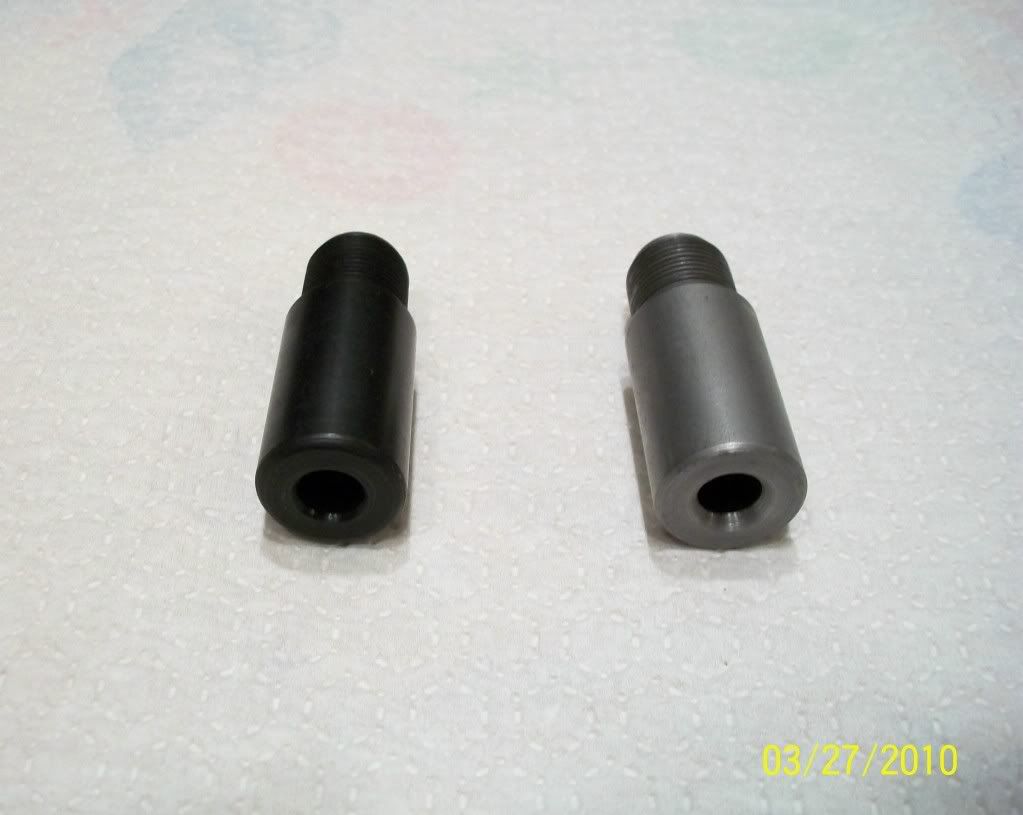J
J. Valentine
Guest
With the thought that: "Problems worthy of attack prove their worth by fighting back". (Paul Erdos, I believe?)....bullet making to me is a constant effort of tweaking, finding the weak spots and making that part of the process better.
One of the things about bullet making with steel dies is the fact that they require more lube than carbide. Generally speaking, bullets from a steel die require more ejection effort that from a carbide die. This is one of the reasons that most makers of steel dies like to have a bit of taper on the shank of the point up die..to ease the ejection effort.
When Larry Blackmon made my steel dies, I specified a straight shank. I did this for a number of reasons, chiefly because I feel a straight shank bullet 'tunes up' better than a tapered shank bullet. I'm talking .30's here 'cuz I'm ignorant about anything else. The success of the tapered shank/double ogive 6's are undeniable, but I'm not convinced that crosses over directly to the .30's. Anyhow.....
One of the consequences of Larry making my point die 'straight up' is that there's always a bit of 'fuzz' at the tip of the bullet, due to the ejection effort. I've made my own ejection punches with different profiles on the end to help this, but the reality is that's just a part of the process. It doesn't hurt anything and it's no worse than many other custom bullets I've seen, but it still bugs me. Some lots of jackets are better than others in this regard.
In an effort to reduce the ejection effort, I just had the point die that's used for my B-1 Wide Bodybullets salt bath treated by Joel Kendick. With the promise of decreased friction, maybe this will help in the ejection effort. If it does, it does. If it doesn't, it doesn't. But it will be an interesting test to try.
Lube is an important part of the equation. Decreasing the ejection effort seems...on the surface...to be a matter of finding a 'slippery-er' lube. But as weird as it sounds, some of the super slick lubes I've brewed up caused the bullet dimensions to vary greatly. Seems like a bit of 'drag' is needed for consistency. The best lube I've found is the brew from The Clan Robinett out of Madrid, Iowa.
Nitrocarburized die on the left, standard die on the right.

The lathe trimmed jackets make the neatest meplats however most are pinch trimmed for production speed. If the pinch trim dies are new and sharp the meplats are ok but as the dies wear the jacket mouth gets more ragged after pinching , resulting in rougher meplats.
A good moly coating process tends to smooth out meplat feathering to some degree and I notice mine are always better after tumbling.
Did the case hardening change the internal dimentions at all ( bullet produced ) ?
Last edited by a moderator:

